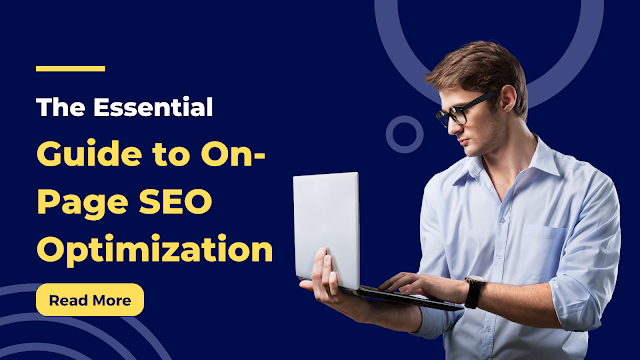Introduction In the ever-evolving world of digital marketing, Search Engine Optimization (SEO) remains a critical component. Within SEO, on-page optimization plays a pivotal role in determining a website's ranking on search engine result pages (SERPs). In this guide, we will delve into the essential aspects of on-page SEO to help you boost your website's visibility and rankings.
Understanding On-Page SEO On-page SEO focuses on
optimizing individual web pages to improve their search engine rankings and
attract organic traffic. It involves various strategies and techniques, all
aimed at enhancing the relevancy and quality of your content for both users and
search engines.
Keyword Research and Selection The foundation of
on-page SEO starts with thorough keyword research. Identify relevant keywords
and phrases that align with your content and audience. Tools like Google
Keyword Planner and SEMrush can assist in finding the right keywords.
Optimizing Title Tags and Meta Descriptions Your
title tag and meta description are often the first things users see on the
SERPs. Craft compelling, keyword-rich titles and descriptions that encourage
users to click through to your website.
High-Quality Content Creation Content is king. Produce high-quality, informative, and engaging content that provides value to your audience. Google's algorithms prioritize content that answers user queries effectively.
Also Read: What Is SEO – Search Engine Optimization? (2023)
Header Tags and Structured Content Organize your
content with header tags (H1, H2, H3, etc.) to improve readability and signal
the hierarchy of information to search engines. This helps in better indexing
and ranking.
Image Optimization Images are an integral part of web
content. Optimize images by compressing them, using descriptive alt text, and
ensuring they don't slow down your page's loading speed.
URL Structure Create clean and user-friendly URLs
that reflect the content of your page. Avoid long, convoluted URLs with
unnecessary parameters.
Mobile Optimization With the rise of mobile users,
ensure that your website is mobile-friendly. Responsive design and fast-loading
mobile pages are critical for SEO success.
Conclusion On-page SEO is a continuous process that requires attention to detail and a commitment to delivering high-quality content. By implementing these strategies, you can improve your website's search engine rankings, attract organic traffic, and ultimately achieve your digital marketing goals.
FAQs – Frequently Asked Questions
Q1: What is on-page SEO, and why is it important for
my website?
A: On-page SEO refers to the practice of optimizing
individual web pages to improve their search engine rankings. It's crucial
because it helps search engines understand your content and present it to users
when relevant queries are made.
Q2: How can I perform keyword research effectively?
A: Effective keyword research involves using tools
like Google Keyword Planner, SEMrush, and exploring long-tail keywords relevant
to your niche. Consider search volume, competition, and user intent when
selecting keywords.
Q3: What are title tags and meta descriptions, and
how do they impact SEO?
A: Title tags and meta descriptions are HTML elements
that provide a brief summary of your page's content. Optimizing them with
relevant keywords and compelling language can improve click-through rates and
SEO rankings.
Q4: How do header tags contribute to on-page SEO?
A: Header tags (H1, H2, H3, etc.) structure your
content and improve readability. They also help search engines understand the
hierarchy of information on your page, which can positively impact your
rankings.
Q5: Why is image optimization important for on-page
SEO?
A: Image optimization involves compressing images,
using descriptive alt text, and ensuring they load quickly. This improves user
experience and helps search engines understand your visual content, potentially
boosting your rankings.

